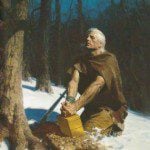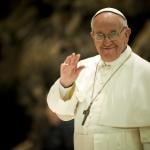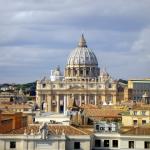
I thought that I would perhaps shift gears a bit from my recent (quite understandable) Near Eastern focus and repost this column that Bill Hamblin and I published in the Deseret News back on 2 March 2018:
In Hawaiian mythology, the great gods Kane (pronounced KAH-nay), Lono, Ku and (possibly) Kanaloa existed before the creation of the world.
In the beginning, according to one tradition, nothing existed except a chaotic blackness called the “Po” (“night”). But Kane awoke and, realizing that he was distinct from the Po, managed to break free from it. Thereafter, when Lono and then Ku perceived that Kane had separated himself from the Po, they too freed themselves.
Next, Kane created light, with which he pushed the darkness back. These three gods created all the lesser Hawaiian deities — most famous among them the fire and volcano goddess Pele, creator of the Hawaiian Islands. Then, they created our world to serve as a footstool for the gods.
Finally, the three gods gathered red clay from the four corners of the Earth, mixed it with their saliva, molded it into the image of Kane (though with a head formed by Kane himself from a specially selected white clay). When they had breathed life into the clay model — according to some accounts, it was Kane alone who breathed that life into the clay figure — it became the first man.
The similarity of this account to Genesis 2:7, where “Adam” or “man” is created out of “adamah” (literally, “red clay”) and the Lord God breathes into him “the breath of life,” is obvious.
Associated with dawn, sun and sky, Kane seems to have been the highest of the four great deities. He was the god of procreation and the ancestor of all humans, both chiefs and commoners.
Ku, god of politics and war, bore many names, including Kukaʻilimoku (the “Snatcher of Land”). Uniquely among Hawaiian gods, his worship sometimes included ritual human sacrifice. Perhaps appropriately, he was associated with such animals as sharks and hawks.
Lono — sometimes called “Lono-makua” (“Lono the Provider”) — was linked with rainfall, fertility and agriculture, as well as with music and peace. Although the traditions are unclear and sometimes contradictory, there seems to have been a legend in which Lono manifested himself in human form, departing afterwards to “Kahiki” (likely Tahiti) with a promise to return.
Captain James Cook arrived at the Big Island of Hawaii in 1779 during the great harvest festival of Makahiki, sacred to Lono. Coincidentally, the rigging of his ship, HMS Resolution, resembled some of the artifacts associated with Lono-worship, and, just as ritual processions honoring Lono went clockwise around the island, Cook had sailed clockwise around the island before making landfall.
Some historians speculate that, for these and other reasons, the Hawaiians took Captain Cook to be a manifestation of Lono. When a member of his crew became ill and died, however — something not expected among deities —the Hawaiians became suspicious and much less compliant. And when a violent altercation broke out, Cook and several others among his crew were killed.
Some authorities theorize that Kanaloa was a lesser god who was created to preside over the dead and even that his worship may have arrived in Hawaii only after A.D. 1100, via a secondary Polynesian migration. Given his connection with the underworld, several commentators have tried to identify him as a god of evil and of death itself, permanently at war with Kane. But this may reflect the viewpoint of European missionaries, who were perhaps seeking to associate the four great Hawaiian deities with the Christian Trinity and (in Kanaloa’s case) with Lucifer or Satan.
One legend says that Kanaloa tried to mimic the creation of man by Kane, Lono and Ku, but that — unlike them — he was unable to bring his statue to life. So, humiliated, he challenged Kane, vowing that Kane’s human creations would be mortal and that, when they died, they would belong to him in the underworld.
Balanced against such accounts, however, is the fact that Kanaloa and Kane were actually often associated with one another and worshiped together. They were apparently viewed as mutually complementary rather than opposed, and may even have been considered brothers.
Canoe builders, for example, would invoke Kane during their labors, while sailors aboard completed boats would call upon Kanaloa for guidance and protection. Kane was the lord of the area north of the sun’s annual path, while Kanaloa was the master of the area to its south. Some commentators have suggested that the two gods together represent a divine duality of wildness and domestication, much like the famous “yin and yang” of Chinese Taoism.
Posted from Jerusalem, Israel











